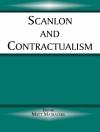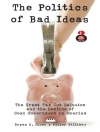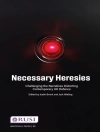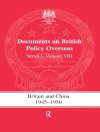Questions about the likelihood of conflict between the United States and China have dominated international policy discussion for years. But the leading theory of power transitions between a declining hegemon and a rising rival is based exclusively on European examples, such as the Peloponnesian War, as chronicled by Thucydides, as well as the rise of Germany under Bismarck and the Anglo-German rivalry of the nineteenth and early twentieth centuries. What lessons does East Asian history offer, for both the power transitions debate and the future of U.S.-China relations?
Examining the rise and fall of East Asian powers over 1, 500 years, Beyond Power Transitions offers a new perspective on the forces that shape war and peace. Xinru Ma and David C. Kang argue that focusing on the East Asian experience underscores domestic risks and constraints on great powers, not relative rise and decline in international competition. They find that almost every regime transition before the twentieth century was instigated by internal challenges and even the exceptions deviated markedly from the predictions of power transition theory. Instead, East Asia was stable for a remarkably long time despite massive power differences because of common understandings about countries’ relative status. Provocative and incisive, this book challenges prevailing assumptions about the universality of power transition theory and shows why East Asian history has profound implications for international affairs today.
Tabella dei contenuti
List of Figures and Tables
Preface
Part I. Introduction
1. What Are the Lessons of History?
2. The Common Conjecture in War and Peace: Culture, Not Structure
Part II. History
3. The Lessons of East Asian History, 500–1900: Internal Challenges, Not External Threat
4. The Mongol Conquest of the Thirteenth Century and the Song–Yuan Transition
5. The Small Attack the Large: The Imjin War, 1592–1598
6. Internal Collapse: The Ming–Qing Transition, 1600–1680
7. How Korea Remained Independent Until 1910: The Common Conjecture Between Small and Large States
Part III. Contemporary U.S.–China Relations
8. East Asian Power Transitions in the Twenty-First Century
Part IV. Conclusion
9. The Lessons of History and the Future of East Asia
Appendix: Journal Rankings and Journal Articles on Power Transition
Notes
Bibliography
Index
Circa l’autore
Xinru Ma is a research scholar at Stanford University’s Walter H. Shorenstein Asia-Pacific Research Center. Her scholarship focuses on nationalism, great power politics, and East Asian security.David C. Kang is Maria Crutcher Professor of International Relations at the University of Southern California, where he also directs the Korean Studies Institute. His Columbia University Press books include East Asia Before the West: Five Centuries of Trade and Tribute (2010) and, with Victor D. Cha, Nuclear North Korea: A Debate on Engagement Strategies (revised and updated edition, 2018).












